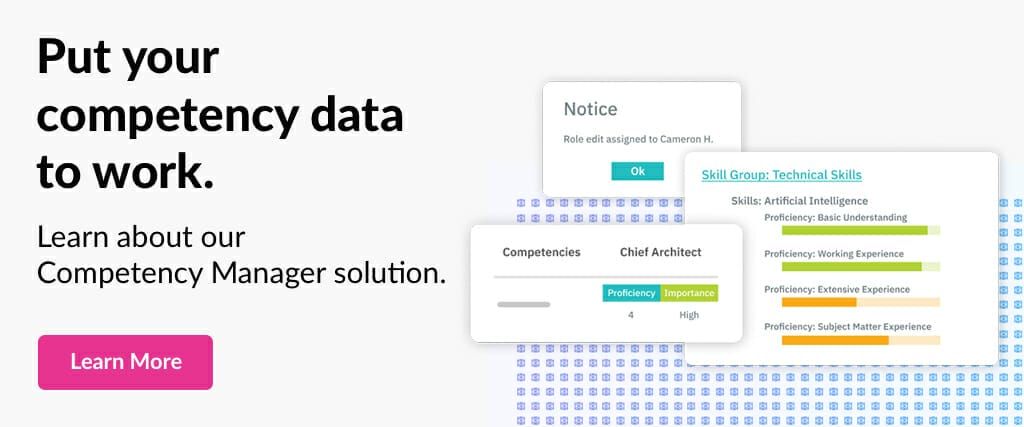Importance of Job Architectures in Achieving Equality

The Importance of Job Architectures in Achieving Pay Equality
Companies have always had a hard time determining the right approach for designing a job architecture that supports pay equality, and diversity. It’s a complicated process when you have to ensure you hire and develop the right talent, adhere to diversity measures, all while making sure you’ve achieved pay equality.
It often gets lost in translation that an employee’s skills and competencies matter the most in determining their pay, especially when companies are under pressure to increase their diversity efforts and achieve pay equity across all mediums.
In this article, we’ll go over what job architectures are and how their use can support pay equality.
What Are Job Architectures and Pay Equality?
Job architectures provide managers and HR professionals with a structured approach for assessing, developing and sourcing talent based on skills and competencies. From this framework put in place, employees can develop or improve skills according to both company and individual needs while making sure they’re compensated accordingly.
Each company’s approach to designing their job architecture should integrate their company’s culture and business objectives, but all should support one common goal – consistent and objective skill evaluation. However, due to a lack of visibility into employee’s skills and poor job architecture designs, there appears to be one thing that these companies have trouble with — pay equality.
Pay equality refers to getting equal pay for work of equal value. A crucial function of job architectures is to determine the right skills and competencies needed to perform in a given role. Those skills and competencies and their proficiency level should support determining how much an employee should be paid for their work. In such a case, an employee’s pay would only depend on their abilities and not their gender, race, ethnicity, or any other such factor.
Therefore, effective job architecture design is a great way to close gender pay gaps, and other discrepancies, by allowing for growth based on competencies and skills. As a result, companies can defend their pay schedules legally and tangibly.
How Can You Achieve Pay Equality Using a Job Architecture?
Pay equality isn’t achieved when you pay all parties equally for the sake of diversity and inclusivity. True pay equality is possible when each employee is paid according to their skills, competency, and execution.
The following practices based on successful job architectures can help you achieve pay equality.
Utilize Pay Audits
Many companies use pay audits to analyze pay equality in their organization. They tend to use certain software/certifications, and legal teams conduct the necessary analyses to see if their practices are by the book.
You can check whether employees are being paid according to their skills and services. You can also check whether there is any gender pay gap or any other form of pay gap. It helps determine whether the differences in total pay are due to skill differentiation or bias.
While pay audits may bring up unwanted results, they can be critical in achieving pay equality in your organization. Furthermore, pay audits also clear up the roles of employees, how valuable their skills are, and which employees can be considered for other processes, such as succession planning.
Clarify Performance Metrics
Since a significant part of a good job architecture is recognizing and supporting competencies, it’s crucial to have clear performance metrics related to those competencies that were outlined. Companies should make an effort to define these performance metrics so employees can understand the pay-determining process better.
Having clear performance metrics can systematically eradicate outstanding biases. Any decisions made for things such as promotions can be backed up with conclusive data that is easily defensible.
Furthermore, to ensure a fair process, it’s imperative to keep it transparent. Transparency ensures that each employee is evaluated equally and that the results are analyzed using the same groundwork. As a result, you’ll have a complete list of employees, their skills, competencies, and how much they’re getting paid. You can then check whether there is any pay gap in employees with the same skillsets and competencies.
If you find any discrepancies, gender pay gap, or any other form of gap, you can immediately rectify the issue to move closer to pay equality.
Reevaluate Your Offer Process
Many companies tend to ask candidates for their salary history and what they expect to earn if they get the job. The tactic is used to determine several things, such as how confident the candidate is in their abilities, their expectations, and how eager they are to join, among other reasons. However, some companies use it as a benchmark to provide an offer. That is, if a candidate quotes an expected offer lower than what the company is ready to offer, they often go with it.
Most of the time, it causes a massive rift in pay equality because certain candidates are likely to be earning lower salaries. As a result, some companies are moving towards banning salary history questions and other related inquiries.
The idea is to provide an offer that reflects the skillsets and experience a candidate can bring to your company. As a result, all new hires would receive their pay according to the competencies defined in a company’s job architecture. It not only moves you closer to achieving pay equality, but you can also legally regard it as fair pay.
Furthermore, when sourcing candidates internally during succession planning or internal mobility practices, hiring managers have access to the employee’s salary already and can appropriately provide fair payment. This is one benefit to hiring internal candidates for your vacant roles.
Maintaining Pay Equality with Job Architectures
Developing a working job architecture requires different levels of effort for various organizations. Talent management in small companies may be easier because there are fewer roles, but it can be tricky because you don’t have a sizeable talent pool. There may be fewer opportunities for ensuring pay equality and inclusiveness.
Alternatively, talent management in larger companies can be equally complicated because you need stricter framework protocols to achieve pay equality. Consistent pay information updates, gap analyses, constant monitoring, and remediation protocols need to be enacted.
In any case, it’s critical to make sure your job architectures always prioritizes skills and competencies. That helps in achieving pay equity vis-à-vis pay equality. If you combine your job architecture with a working diversity strategy, you can ensure both inclusivity and pay equality.
Why Your Hiring Freeze Shouldn’t Scare You
Due to hiring freezes, a large number of companies have been abruptly limited to their existing talent pools to staff projects and fill skill gaps. However, we don’t think that should scare you. Instead, if you focus your energy on the optimizing your existing workforce, you can overcome these obstacles and set yourself up for success in the long-run.
Taking the Right Approach to Developing Critical Skills
Gartner’s 2020 Future of HR Survey names building critical skills as the #1 priority – together with addressing internal skills gaps. To identify the skills your organization needs, Gartner recommends a ‘’market driven, predictive approach’’. This requires both an understanding of the trends in your specific sector, together with a skills audit to gain an accurate picture of the skills your business needs to grow and remain competitive.
Getting Started with a Competency-Based Skills Audit
A competency-based skills audit helps establish a clear understanding of the skills available and required for each role, and unlocks the potential for growth, development and mobility already available in your company.




